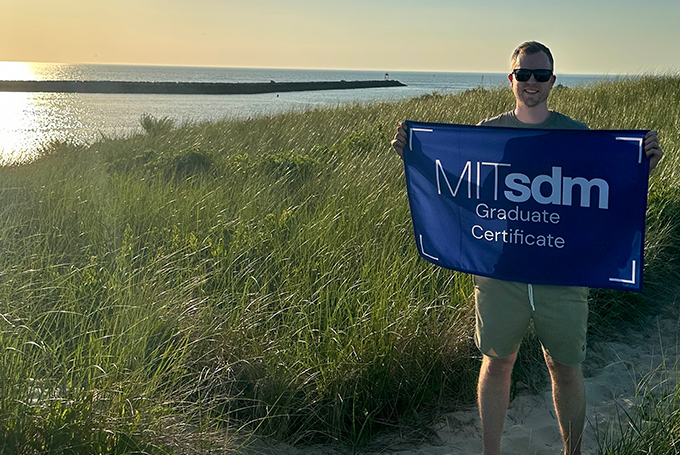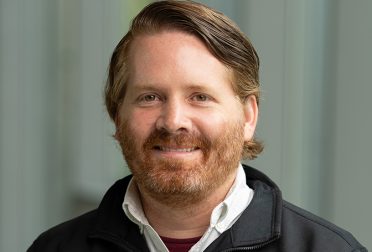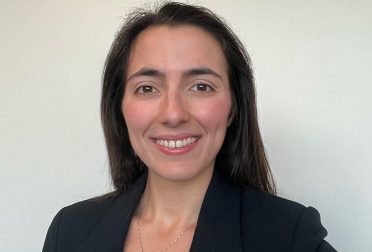When John Hushaw started the graduate certificate at SDM, he was developing underwater robotics at the Johns Hopkins University Applied Physics Laboratory (JHU/APL). Now that he’s completed the graduate certificate, he’s changed his focus to land-based robotics at Amazon. But the systems skills he learned at SDM are applicable everywhere. As John puts it, “I like to think of myself, especially after the SDM program, as an interdisciplinary multi-tool.”
John has a background in acoustical and mechanical engineering, including a B.S. from the University of Hartford and an M.Eng. from the University of Connecticut. At JHU/APL he became a project manager and a lead systems engineer developing innovative ocean systems. He found that while he was comfortable with the technical side of leading teams, he needed more knowledge of project management and systems architecting techniques to be effective. Since he already had a master’s degree, he knew the commitment that a full degree program requires in both time and energy. SDM’s graduate certificate was only a one-year program, with a core class and a capstone project. “I really liked that it wasn’t strictly project management or engineering management,” he adds. “It focused on those three pillars: systems engineering, project management, and system architecture.”
Students in the graduate certificate program work full time while attending the core class, and John was able to fit his work schedule around the lectures and recitations. He was even able to attend a lecture on Zoom from the command center on a ship while he was supporting a sea test. Every lecture had something new and novel, he says, and he appreciated the conversations both in class and outside of it with the teaching team. He also discovered that working while studying meant a very short pipeline to put his new skills into practice. “A lot of times I could get a good idea from what I was learning in class and go work on it at the end of the day,” he says. John cites decomposing systems into their various subsystems and elements of form and function as one mechanism that was immediately useful and continues to be crucial to his work today. He further applied the lessons from the SDM core to his capstone project for JHU/APL. John was passionate about digital engineering and model-based systems engineering and used those lessons to tackle communication optimizations between functional disciplines at the lab. He proposed a new architecture for building systems faster by allowing for sharing information more freely while still keeping things secure and private. Because JHU/APL was planning for a new building in the near future there was an opportunity to actually implement these changes.
John also happened to be working from the Boston area, which gave him a unique perspective on the program. All graduate certificate students come to campus in August, January and May for cohort-building and project workshops, but most of them study remotely for the rest of the year. Because he was in Boston, John was able to visit campus and meet with his project teammates in person. He also found that being a graduate certificate student opened doors across MIT. “You’re an actual student with an ID, with access to the campus,” he says. “I remember having so much fun just reaching out to different professors and researchers as part of the assignments. I was actually getting responses, getting time in their labs and looking at what they’re working on. How cool that everyone’s open to sharing what they’re working on.”
Since completing the graduate certificate, John has moved to a new role at Amazon Robotics. “SDM was really an integral part of getting me prepared for that type of change,” he says. He’s on a system architecture team and uses the tools he learned in the core class all the time, whether it’s decomposition and architecting of systems, developing requirements, or managing the complex interactions of hardware and software. “There are a lot of challenges from a complexity standpoint and from a system of systems perspective. I use everything in my toolbox, and I reference my SDM coursework frequently.” While John does have one fellow SDM alum on his team, he finds that having the language of systems engineering helps him relate to his colleagues from other backgrounds such as medical devices.
In addition to the skills he learned in the graduate certificate, John says he found a global community in the program. “I’ve used my network early and often, and people are always willing to meet up for coffee or get on a call,” he says. “It gives you so much back.” And this applies not only to the teammates he worked with on projects, but with TAs and classmates he might have only interacted with a couple of times. That’s true of SDM as a whole, he adds. Earning the graduate certificate gave him the chance to transform his career. “The SDM program opened my eyes to the realm of possibility.”




